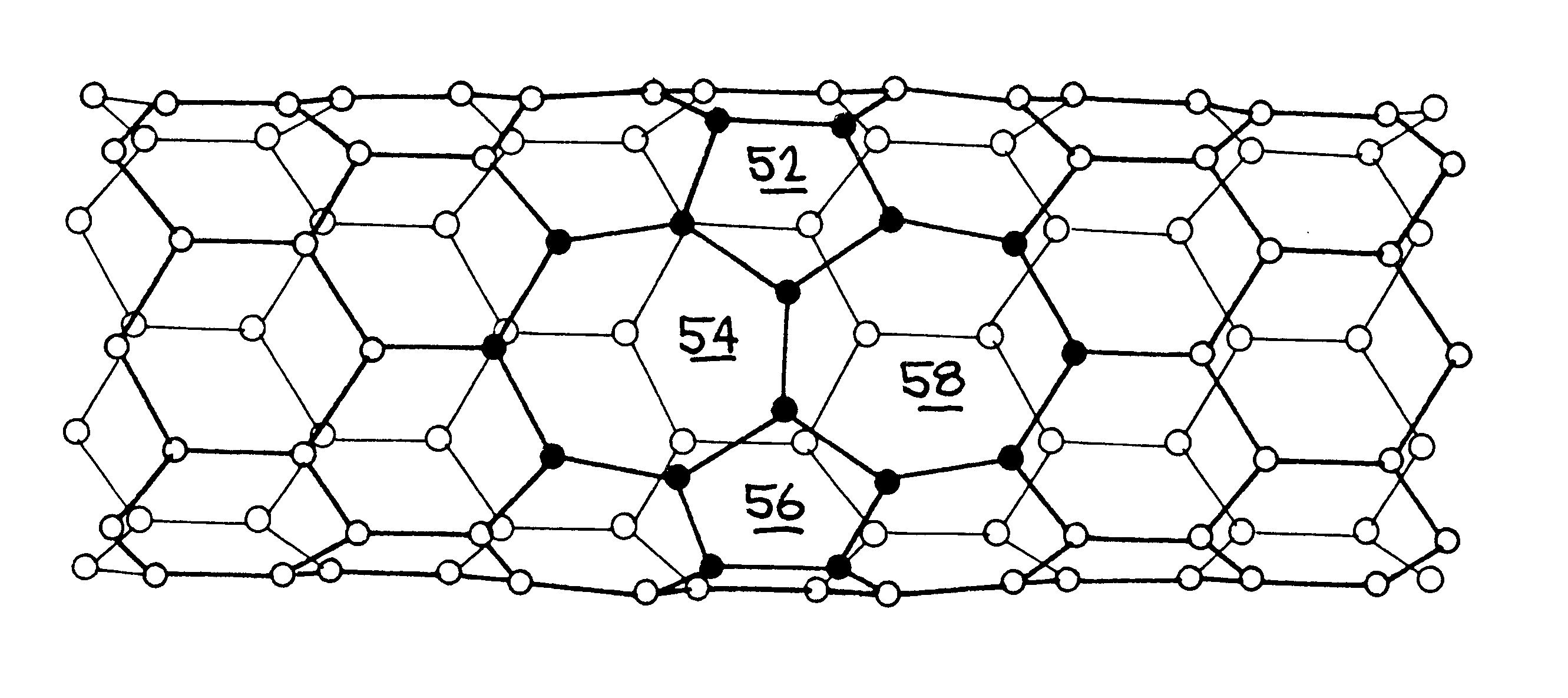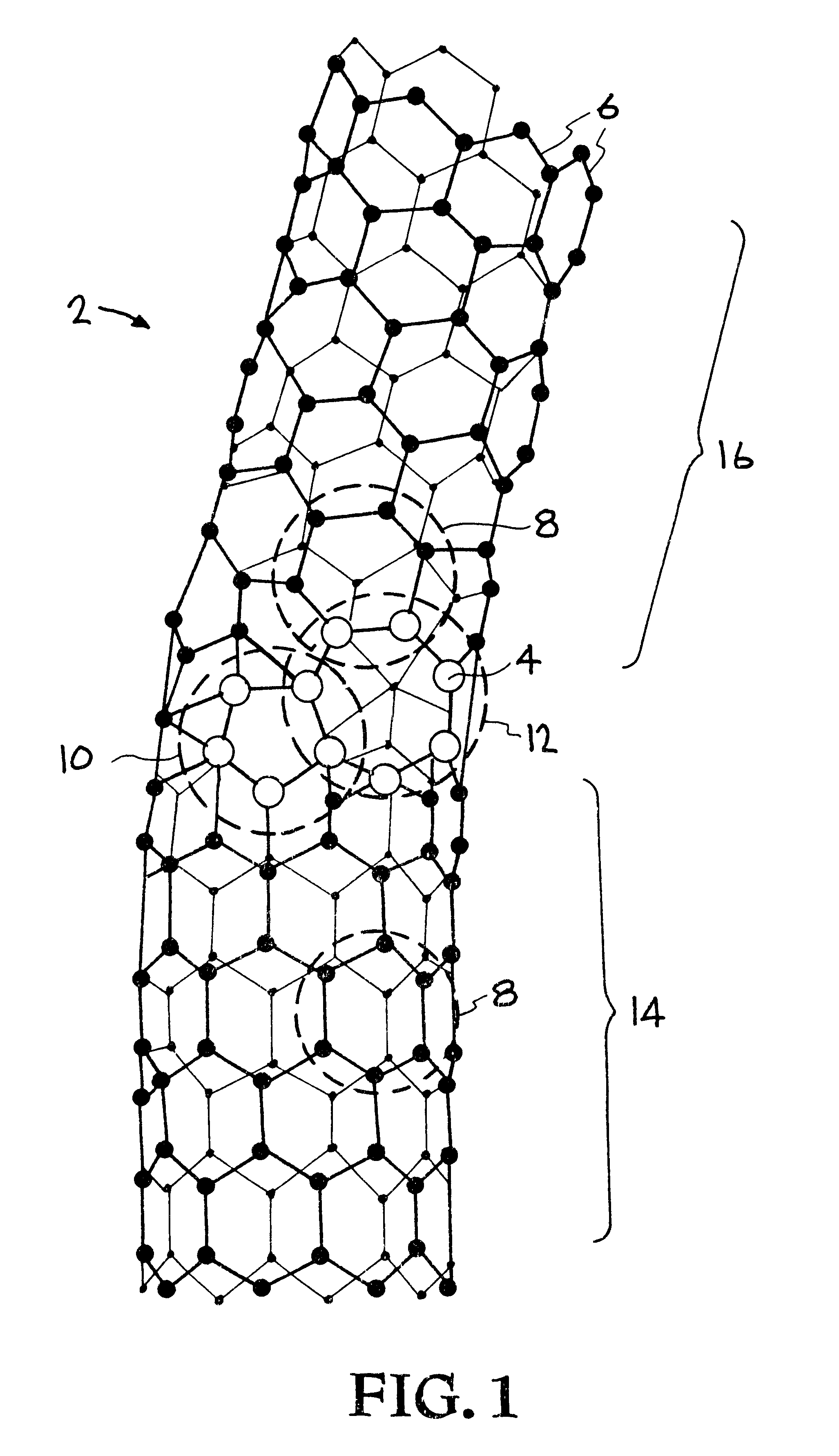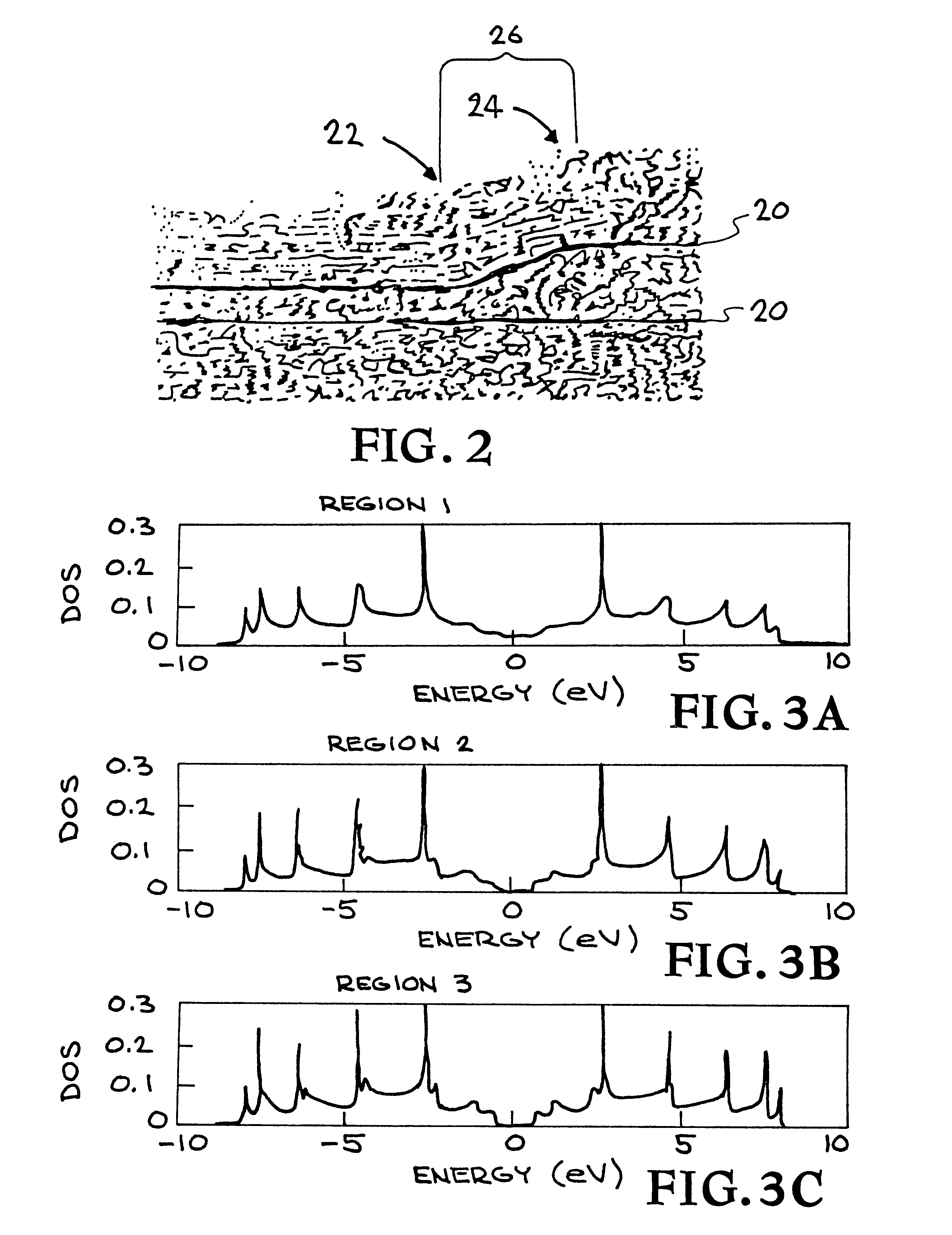Nanotube junctions
- Summary
- Abstract
- Description
- Claims
- Application Information
AI Technical Summary
Benefits of technology
Problems solved by technology
Method used
Image
Examples
example 1
TEM of Junction Nanotube
FIG. 2 shows a transmission electron microscope photograph of the inventive carbon nanotube having an extended pehtagon-heptagon pair in the junction. The interior wall of the tube 20 is darkened for photographic clarity. The positions of a heptagon 22 and pentagon 24 were inferred by performing geometrical constructions and noting the locations at which tubes with parallel walls join the junction 26. This carbon nanotube was synthesized, isolated, and imaged via transmission electron microscopy using conventional experimental methods [S. Iijima, Nature 354, pgs. 56-58, (1991)].
Tubes can also be created which have more than one concentric wall. These tubes are known as multiwalled tubes. FIG. 2 shows a multiwalled tube. The parallel strips above the interior wall 20 are cross-sectional cuts of many concentric tubes. Multiwalled tubes can be designed with junctions as described above existing in the individual walls, yielding structures with transitions in ove...
example 2
Semiconductor / metal Junction
FIG. 1 shows an (8,0) carbon nanotube joined to a (7,1) carbon nanotube. The circled atoms 10 and 12 comprise the adjacent pentagon-heptagon pair that forms the junction. The structure can be denoted as (8,0) / (7,1) in analogy with interfaces of bulk materials. By calculating the electronic structure using quantum theory we find that far from the interface the (7,1) section is a semimetal and the (8,0) section is a semiconductor having a moderate band-gap. The two sections and the junction combine to form a quasi one-dimensional semiconductor / metal junction, taking into account that the band-gap is small enough in the (7,1) nanotube section that it approximately behaves like a metal. The inventive structure, un like other semiconductor / metal junctions, is essentially composed of a single chemical element.
A tight quantum-based tight-binding model having one .pi.-orbital per atom along with the Surface Green Function Matching method (SGFM) (F. Garcia-Moliner...
example 3
Semiconductor / semiconductor Junction
A (8,0) / (5,3) semiconductor / semiconductor carbon nanotube was examined using the same techniques as above. The heterojunction joining the unit cells of the (8,0) and (5,3) nanotube sections was formed using three pentagon-heptagon pairs and two hexagons. Two different junction configurations were possible: one having the two hexagons adjacent and one having the hexagons separated. The sequence of n-membered carbon rings encountered when tracing around the circumference of the nanotube heterojunction was: 6, 7, 5, 6, 7, 5, 7, 5.
The band-gap of a defect-free (5,3) nanotube is 1.4 eV 0.2 eV larger than that of the (8,0) nanotube. The (8,0) / (5,3) nanotube thus provides a prototypical example of a semiconductor / semiconductor heterojunction.
The methods used to determine the LDOS was the same as described in Example 2.
The results for the (8,0) / (5,3) semiconductor-semiconductor heterojunction are plotted in FIGS. 5 and 6. For the same reasons of compariso...
PUM
 Login to View More
Login to View More Abstract
Description
Claims
Application Information
 Login to View More
Login to View More - R&D
- Intellectual Property
- Life Sciences
- Materials
- Tech Scout
- Unparalleled Data Quality
- Higher Quality Content
- 60% Fewer Hallucinations
Browse by: Latest US Patents, China's latest patents, Technical Efficacy Thesaurus, Application Domain, Technology Topic, Popular Technical Reports.
© 2025 PatSnap. All rights reserved.Legal|Privacy policy|Modern Slavery Act Transparency Statement|Sitemap|About US| Contact US: help@patsnap.com



